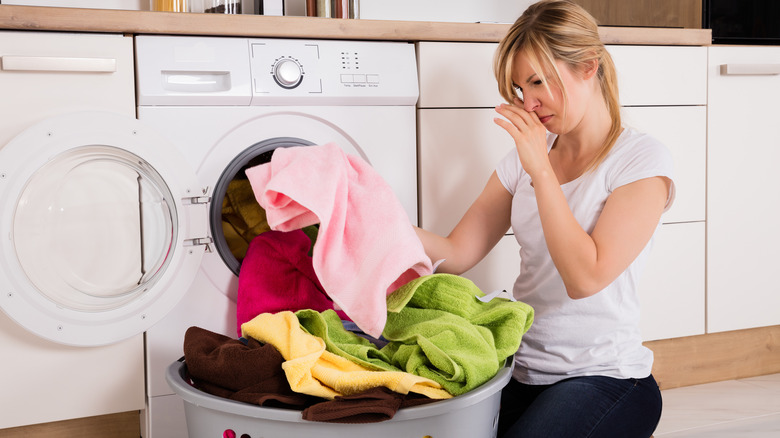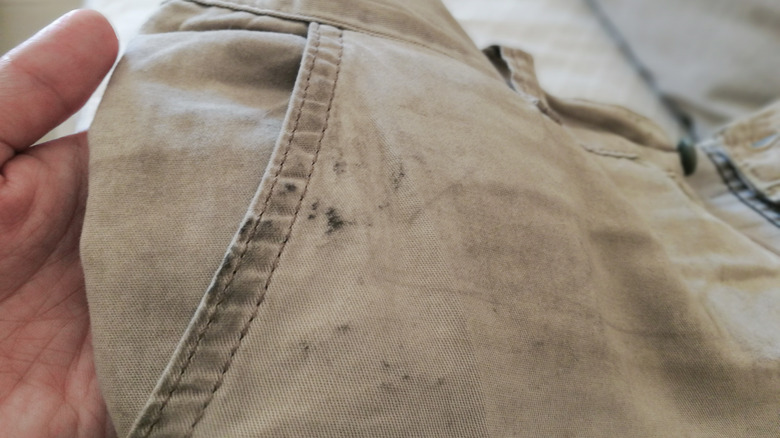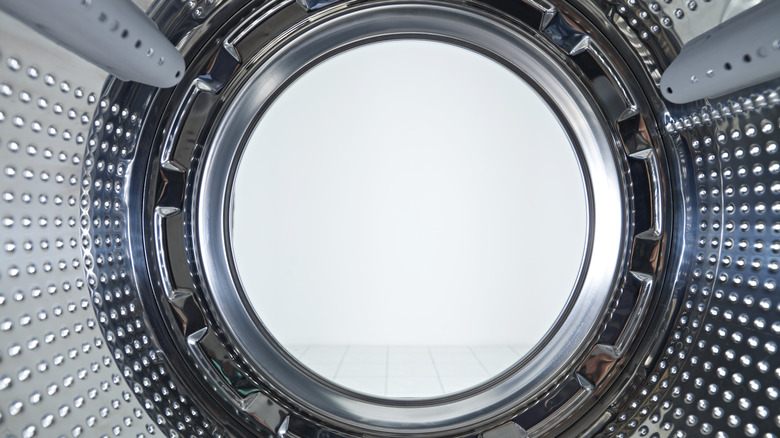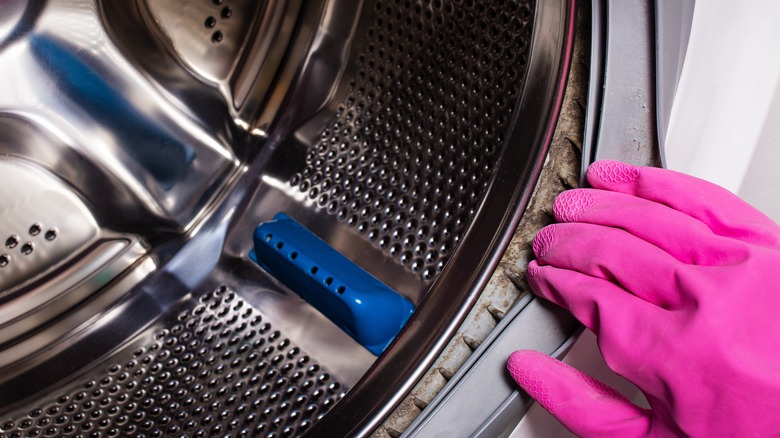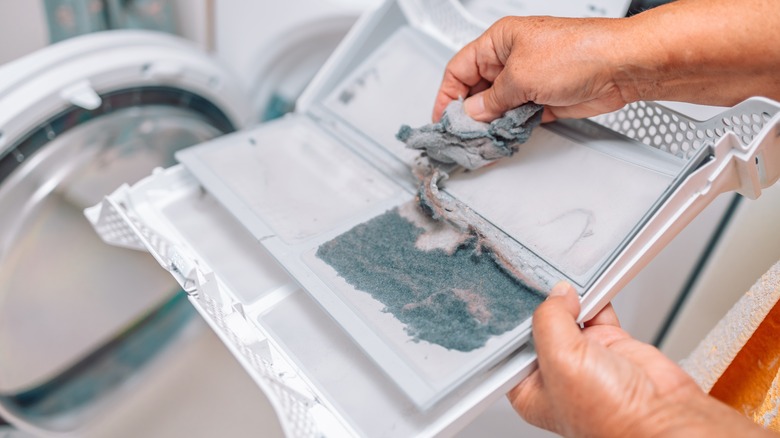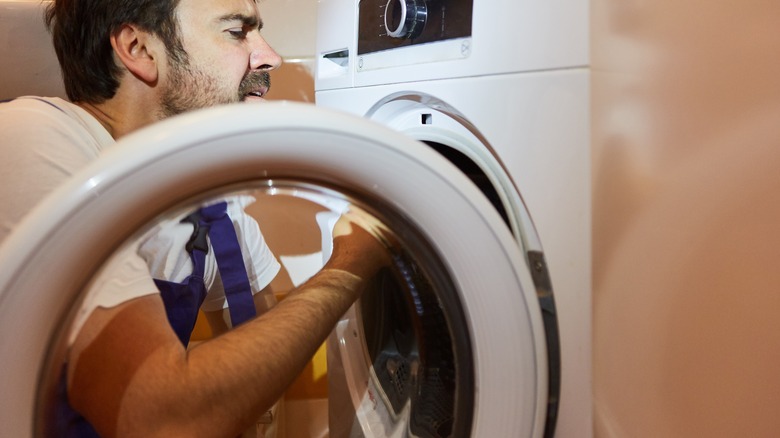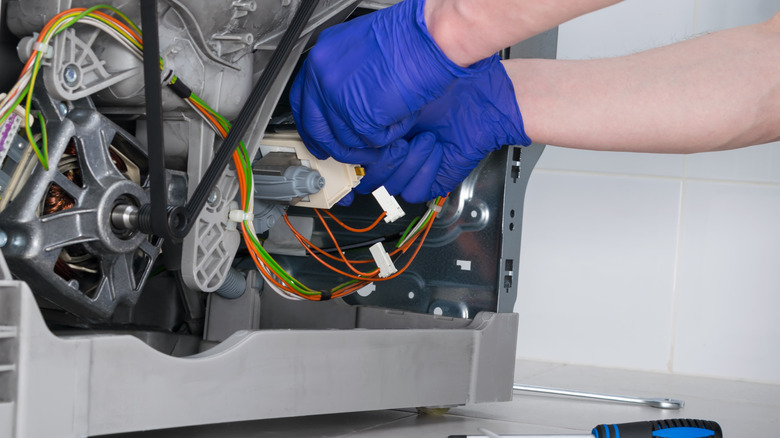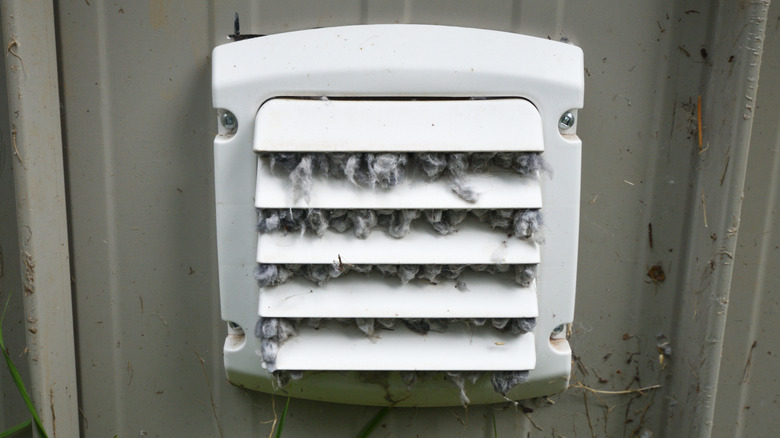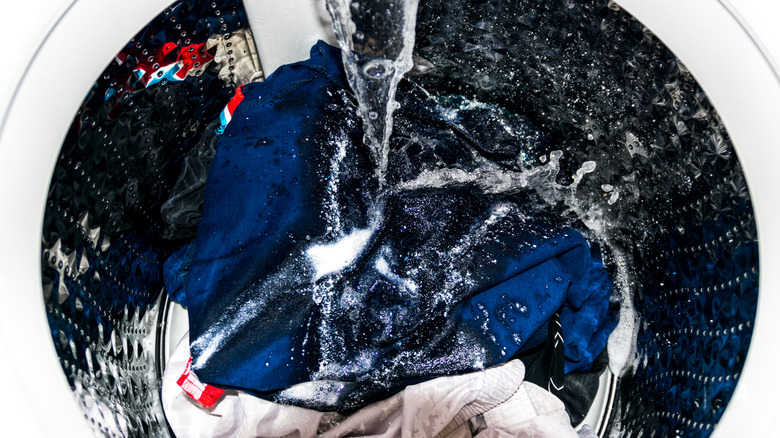Solving The Mystery Of A Stinky Dryer: 12 Common Causes & Solutions
If you have a stinky dryer, narrowing down the source and addressing it can be frustrating. It likely goes beyond the smell. You may also concerned with your clothing's longevity and hygiene. Understanding the several possible causes of unpleasant odor is critical to helping resolve the problem and preventing the smell from returning.
From overlooked lint buildup to more dangerous electrical issues, each factor helps to determine how well your dryer functions and how efficient it is. Some causes, like a washer that doesn't drain well or blocked vents, may seem minor, but they can trigger significant problems if you ignore them. Others are less obvious, like pet hair building up or foreign objects getting stuck and melting.
The goal is to pinpoint what makes your dryer stinky and how to fix it. You'll also want to know how to prevent it from happening again. So, whether you're dealing with a burning odor, lingering, musty smell, or just a generally unpleasant scent, there are solutions to help restore your dryer to peak condition. Then, your laundry routine can continue, ensuring you have clean, nice-smelling clothing.
Water leakage
If water leaks into or under your dryer and sits, this can cause an unpleasant, musty smell. Leaky pipes, faulty plumbing, or a poor laundry room design can all encourage water leaks. If the water seeps under the dryer, it will likely get stuck there in the darkness and warmth of the unit. This is perfect for mold and mildew growth, and this can cause a stinky smell.
To address this issue, look closely around your dryer to see if you can spot any signs of dampness or leaking water. Pay attention to the floor under the appliance and the walls behind it. If you notice wet spots, look for their source. This could be a faulty hose on your washer or a leaky pipe. When narrowing down the cause, take steps to fix it as quickly as possible, and call in professional help for plumbing-related issues. Also, move the dryer so the area underneath can fully dry out, and consider running a dehumidifier. After you address the issue, clean and dry the dryer's exterior surfaces to remove any mold or mildew. Then, wipe down the drum with a mild detergent and run the dryer on a high-heat cycle while it's empty.
Using improper dryer settings
Did you know that all dryer settings have a specific purpose? Using the wrong settings can cause issues that result in odor. When clothing stays slightly damp because it didn't dry properly, mold and mildew can grow. Using too high of a setting on the wrong materials, especially synthetic ones, can lead to a burning or melting smell. And, packing the clothing into the dryer won't leave enough space to tumble dry, and some items may stay damp while others dry. This can leave your clothing and the dryer with a lingering, stinky smell, either from scorched fabric or mildew.
This is why it's vital to check the manufacturer's care tags and pick the correct settings for the type of fabric you want to dry to prevent odors. Many modern dryers have a range of settings designed to dry different materials completely, from bulky items that need higher temperatures to delicate fabrics that require low heat. Additionally, don't overload your dryer; leave enough room for each item to move freely. This ensures everything dries evenly, and it conserves energy.
Old or stale laundry
How long do you leave your clothes in the washer or laundry basket? When they get dumped or forgotten for an extended period, especially soiled, they can develop odors from bacterial growth. These can be strong smells, and when you finally dry your clothing, the dryer's heat can amplify these odors. Also, these smells can get trapped in your dryer, even after you remove the clothing, and could negatively affect subsequent loads. Environments with higher humidity levels or closed spaces with poor air circulation make these issues worse because they encourage more bacterial growth.
Wash and dry your clothing as soon as possible to prevent stinky odors from building up and clinging to the fabric. Avoid leaving damp or dirty clothing in your washer or laundry basket for days. If you can't take everything out of the washer and pop it into the dryer right away, put them in a well-ventilated area so bacteria have less of a chance to grow. For clothes that already have a smell from sitting, use an odor-eliminating booster like FunkAway to ensure they're completely fresh before hitting the dryer.
Cleaning solvent, grease, or harsh chemical residues
Cleaning solvents, gasoline, heavy-duty cleaning agents, paint thinner, and harsh chemicals are common sources of an unpleasant smell in the dryer. Drying items with some of these things spilled on them and soaked into the fabric will strengthen the odors. To make it worse, drying them may cause a buildup of toxic fumes or pose a fire risk. And, if the solvents stick to the drum, they can also contaminate any laundry you dry after this load.
To stop this from happening, wash any contaminated clothing thoroughly using a strong detergent before you pop it into the dryer. Also, if there is a solvent or chemical stain, don't dry them as soon as they finish washing. Instead, allow these items to air out until the smell dissipates. If this doesn't remove the odor, some auto technicians suggest you wash them separately a few times before drying them. For smells in the dryer, wipe down the interior and run a warm cycle or two without any clothing.
Poor air circulation in the room
If there isn't decent air circulation in your laundry room, HVAC experts claim it can contribute to odors in the dryer. Poor or no ventilation allows dampness and humidity levels to rise, making the air musty. Small or enclosed laundry rooms are more prone to issues because the air can't circulate freely. Additionally, this moist air encourages mildew and mold growth while cutting into your dryer's efficiency. The musty smell can sink into your fabrics and get worse when you toss them into the dryer, leaving a lingering, unpleasant scent that's hard to remove.
Ensuring the air can circulate in your laundry room is the key to fixing and preventing this problem. Install a fan to encourage good air movement, especially during and after you run the dryer. If possible, slide the windows open to let fresh air in. For laundry spaces with no windows, add a dehumidifier to reduce the moisture in the air. Double-check that your dryer has proper venting to the outside because this impacts moisture control and air quality. Keeping the laundry room door open can also aid in ventilating the area.
Bacterial growth in the drum
Your dryer offers a damp, warm environment for bacteria to grow and breed if you don't take steps to clean it, experts say. The heat, moisture, and leftover hair and skin cells give bacteria everything they need to grow, leading to stinky odors. So, when you dry your clothing, they'll come into contact with the bacteria on the drum and transfer the odor.
Regular inspections and cleaning are critical to reduce the chances of bacteria taking hold in your dryer drum. Get a disinfectant cleaner and wipe down the drum, making sure you get into all the crevices. After wiping it down, run a hot air cycle with an empty dryer to kill any remaining bacteria. When you finish drying your clothing, leave the door cracked open to let any lingering moisture escape and the interior to dry. This will help stop bacteria from growing and air out any lingering odors. Additionally, if you have to dry heavily soiled clothing, like gym clothes, clean your dryer more frequently to keep it odor-free.
Old or worn seals or gaskets
Your dryer has several seals and gaskets in the design that are important to keep your machine efficient. But they also play a role in odor control. When you use your dryer, you're wearing out these components, reducing the seal. When this happens, tiny pieces of lint can catch and get stuck, and they get damp when you add wet clothing. Mold or bacteria will grow as the lint breaks down. Your clothing can also get stuck in the crevices, resulting in damage.
Technicians suggest you schedule regular maintenance inspections so a professional can check your seals and gaskets, as well as troubleshoot issues. The silicone or rubber parts can turn brittle, wear down, or even break as they age, primarily if you use the dryer a lot. You'll want to replace these parts quickly, and you may be able to do this yourself. However, if you're not sure or afraid of voiding the warranty, look at the dryer's manual or contact a technician. Keeping all of the gaskets and seals on your dryer in top shape helps stop debris and moisture from building up. Preventing this lessens the chances of bacteria growth, helping to prevent stinky odors.
Lack of routine maintenance
Many people skimp on scheduling maintenance and cleaning, allowing stinky buildup. When you dry a load of clothes, lint, hair, and skin cells stay in the lint trap, vent hose, and drum. Eventually, this lint can get close to the dryer's heating element, and you may notice a burning smell as it gets singed when the dryer is on. This smell can seep into your clothing as it dries and increases the risk of the lint igniting and causing a fire.
To avoid these problems, stick to a regular maintenance routine for your dryer. After each load, clean out the lint trap to help reduce how much of it builds up in various parts of your dryer. Every year, clean the dryer hose and vent if you use your dryer sparingly. For heavy use, clean it twice a year. Call an appliance company and schedule an appointment if you notice signs your dryer needs repairs that you're not comfortable tackling on your own. How often you have them come out depends on whether you can comfortably clean all of the parts and how much you use your dryer.
Melted or stuck foreign objects
One common cause of foul odors in your dryer is not checking pockets and having items melt as the dryer runs. Small pieces of pocket litter, like crayons, gum, plastic wrappers, or pens, get missed and go through the wash and into the dryer. As the dryer heats up, these things can melt or burn due to high-temperature exposure, creating lingering odors. Additionally, if these items melt to your dryer's drum or stick to your clothing, removing them without damaging anything is very hard.
Preventing this issue can be as simple as checking all pockets before you put your clothes in the laundry. But, if something slips past and melts, clean it as quickly as possible. Turn off the dryer and unplug it before scraping the melted material off the drum using a putty knife or something similar. Don't press too hard, or you risk scratching the drum. For more stubborn residue, spray or wipe on a household cleaner that is safe to use on the inside of your dryer. Get a soft cloth and wipe away the melted item.
Electrical or mechanical issues
If an electrical or mechanical part fails on your dryer, you may smell unusual or burning odors from overheating. Electrical issues like faulty wiring, broken heating elements, or overheating motors create a strong smell. Mechanical problems, like seized rollers, a worn belt, or a stuck fan, increase the friction levels and overheat the moving parts. These are also fire hazards that may leave marks on your clothing. You never ignore these smells because they indicate that something isn't working as well as it should.
Regular maintenance is vital to fixing or preventing electrical and mechanical problems with your dryer. Clean the exhaust vent and lint trap, and look for any damage or obstructions with the machine's moving parts. Switch your dryer on and listen to see if you notice any unusual noises. If anything smells or sounds wrong, there are quick steps to take. Turn off your dryer and unplug it to eliminate any immediate risk. Call the company and arrange for a technician to come out as soon as possible. When they get there, they'll look at your dryer's components, find the problem, and repair or replace the parts. Don't use your dryer until you have it professionally checked and cleared.
Blocked dryer vent
A blocked dryer vent can lead to odors in your dryer, and more severe consequences are attached if you don't address it. Your dryer's venting system expels the moist, hot air to the outside as your dryer runs. However, debris and lint can build up in the vent over time and block it. When the vent gets blocked, air can't flow properly, and moisture can get trapped inside the dryer, hose, and vent. In turn, mold can grow and cause a musty smell. Along with this, a blockage is a fire hazard because the lint can build up and overheat.
To reduce and eliminate the odors a blocked dryer vent causes, set up a routine cleaning schedule and inspect it regularly. Disconnect the vent from the back of your dryer and clean out any visible lint you spot from the hole in the back of the dryer and the vent. Get a vent brush or a vacuum with a hose attachment to remove the lint from the pipe. Finally, move the vent flap on the exterior of your home to ensure nothing is blocking it. You'll want to tackle this project at least every one to three years. However, if your dryer takes ages to dry the clothes, you may have to clean it more often. If you're uncomfortable doing this yourself or think you have a severe blockage, hire a professional to clean the whole system.
Inadequate draining in the washing machine
If your washing machine doesn't drain correctly at the end of the spin cycle, this can indirectly cause dryer odors. This typically means that your clothing is usually soaked when you pull it after a spin cycle. This excess water can be tricky for the dryer to eliminate in a single cycle. So, it's common for clothing to feel damp or water to seep into the dryer's parts, causing a musty smell. This constantly damp environment is perfect for mildew, mold, and bacteria growth, and they can cause odors. Also, the extra effort your dryer has to exert to eliminate this extra water adds unnecessary wear and tear on the components.
To prevent this from happening, ensure that your washing machine drains all of the water and goes through a full spin cycle. If it doesn't and your clothes are sopping wet, your washer could have a problem like a clogged drain hose, an issue with the spin cycle, or a pump malfunction. To address these problems, clean out any blockages in the drainage system, adjust the load balance, or schedule a professional repair visit.
